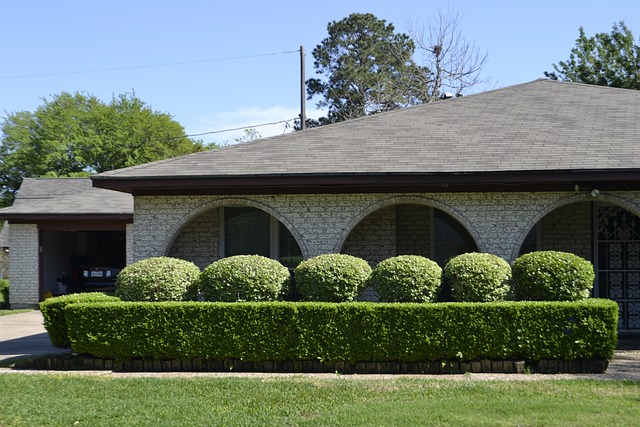Address Occupant Lookup (AOL) is a cutting-edge technology that uses geospatial mapping, databases, and analytics to gather detailed insights about residents and businesses in specific locations. It offers real-time data on demographics, occupancy types, business categories, population density, and activity levels, benefiting urban planning, marketing, emergency services, property management, and safety. By integrating artificial intelligence (AI) and big data, AOL is poised to revolutionize various sectors, enhancing efficiency, security, and resource optimization in smart cities while improving public safety and community resilience.
“The future of urban living is here with the advent of advanced data management systems like Address Occupant Lookup (AOL). This modern approach to data aggregation revolutionizes how we organize and access information about residential areas. AOL plays a pivotal role in shaping smart cities, aiding urban planning, and enhancing safety measures.
This article delves into the multifaceted benefits of AOL, exploring its real-world applications from property management to emergency response. We also gaze into the future, considering the impact of AI and Big Data on the evolution of this game-changing technology.”
- Understanding Address Occupant Lookup: A Modern Approach to Data Aggregation
- The Role of AOL in Smart Cities and Urban Planning
- Enhancing Safety and Security: AOL's Impact on Community Well-being
- Real-World Applications: From Property Management to Emergency Response
- Future Prospects: AI, Big Data, and the Evolution of Address Occupant Lookup
Understanding Address Occupant Lookup: A Modern Approach to Data Aggregation

Address Occupant Lookup (AOL) represents a modern approach to data aggregation, revolutionizing how we connect and understand physical locations with their inhabitants. It’s not just about finding an address; it involves intelligent gathering and interpretation of data tied to specific residents or businesses within that location. By leveraging technology like geospatial mapping, database management, and data analytics, AOL provides a comprehensive view of who occupies a given space.
This innovative system goes beyond basic demographic information. It can track occupancy types, business categories, population density, and even real-time activity levels. This detailed insight is invaluable for urban planning, marketing strategies, emergency services, and more. With the increasing emphasis on data-driven decision-making, AOL emerges as a game-changer in modern data aggregation practices.
The Role of AOL in Smart Cities and Urban Planning

Address Occupant Lookup (AOL) plays a pivotal role in shaping the future of smart cities and urban planning. By providing real-time data on occupants and their addresses, AOL enables more efficient and data-driven decision-making processes. This technology allows city managers to gain insights into population density, demographic shifts, and spatial distribution, facilitating better infrastructure development and resource allocation. For instance, it can aid in optimizing transportation networks, planning green spaces, and improving emergency response services.
In urban planning, AOL serves as a powerful tool for creating smarter and more livable communities. It helps identify areas that require additional amenities, such as schools, hospitals, or recreational facilities, based on population needs. Moreover, it contributes to better environmental management by tracking energy consumption patterns at the address level, enabling cities to implement targeted sustainability initiatives. As urban populations continue to grow, the integration of AOL into city operations will be instrumental in creating resilient and technologically advanced metropolitan areas.
Enhancing Safety and Security: AOL's Impact on Community Well-being

Address Occupant Lookup (AOL) has the potential to revolutionize safety and security measures in communities worldwide. By streamlining and digitizing the process of identifying occupants at a given address, AOL can significantly enhance local law enforcement capabilities. This technology enables efficient access to real-time data, allowing authorities to make informed decisions promptly. For instance, it facilitates quick verification of residents’ identities during emergency situations, border controls, or suspicious activities, thereby improving response times and overall public safety.
Moreover, AOL contributes to community well-being by empowering neighbors and local watch groups. With easy access to occupant information, residents can better protect themselves and their neighborhoods. It fosters a sense of community awareness, enabling quick identification of unfamiliar faces and potential threats. This enhanced security can lead to reduced crime rates, improved peace of mind for residents, and a stronger social fabric within communities.
Real-World Applications: From Property Management to Emergency Response

Address Occupant Lookup (AOL) has vast real-world applications that extend far beyond simple address resolution. In property management, AOL can streamline tenant verification and maintenance request processes by quickly identifying occupants and their contact information. This enhances security and efficiency in managing residential or commercial properties.
In emergency response scenarios, AOL plays a critical role in ensuring swift and effective assistance. First responders can utilize this technology to verify addresses and gather crucial occupant data during crises, facilitating faster evacuation processes, targeted rescue operations, and efficient resource allocation. By leveraging AOL, emergency services can enhance their preparedness and responsiveness in critical situations.
Future Prospects: AI, Big Data, and the Evolution of Address Occupant Lookup

As technology advances, the future of Address Occupant Lookup (AOL) looks promising with the integration of artificial intelligence (AI) and big data analytics. AI-powered systems can analyze vast datasets to provide deeper insights into occupancy patterns, enabling more accurate and real-time lookup results. This evolution will be instrumental in urban planning, emergency response, and even property management by allowing for efficient resource allocation and improved safety measures.
Big data will play a pivotal role in enhancing AOL accuracy and expanding its applications. By collecting and analyzing data from various sources like satellite imagery, social media, and smart city sensors, AOL systems can better understand occupancy changes over time. This capability has significant implications for smart cities, where efficient management of infrastructure and services relies on up-to-date demographic information. With AI and big data, AOL is set to become a powerful tool for navigating the complex web of urban dynamics.
Address Occupant Lookup (AOL) has evolved from a basic data aggregation tool to a powerful asset in shaping the future of smart cities and urban planning. With its ability to provide real-time, accurate information about building occupants, AOL enhances safety and security measures while streamlining various sectors, including property management and emergency response. As we advance towards an era dominated by AI and Big Data, the potential of AOL is set to expand exponentially. Future developments in these fields will further refine and enhance the efficiency and effectiveness of Address Occupant Lookup, making it an indispensable component in creating safer, more manageable urban environments.



